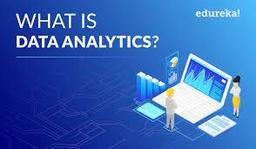
Topic 1 Quiz
Quiz by Muhammad Afif
Feel free to use or edit a copy
includes Teacher and Student dashboards
Measure skillsfrom any curriculum
Tag the questions with any skills you have. Your dashboard will track each student's mastery of each skill.
- edit the questions
- save a copy for later
- start a class game
- automatically assign follow-up activities based on students’ scores
- assign as homework
- share a link with colleagues
- print as a bubble sheet
- Q1
Which"V" represents the characteristic of big data related to the speed atwhich data is generated, processed, and analyzed?
Variety
Volume
Value
Velocity
45s - Q2
Why is veracity a crucial consideration in big data analytics?
Because it concerns the quality and trustworthiness of data.
Due to its benefits in optimizing data collection process.
Because it helps ensures data privacy and security.
Due to principles in making sure data is has more variety and diversity.
45s - Q3
Among the various types of data analytics, which one involves identifying trends and patterns in historical data, often for the purpose of predicting future events?
Predictive analytics
Descriptive analytics
Prescriptive analytics
Diagnostic analytics
45s - Q4
What is the primary objective of descriptive data analytics?
To enhance decision-making by not depending solely on prior data.
To streamline the process of gathering data.
To anticipate forthcoming events or results.
To condense past data and extract practical insights.
45s - Q5
What is a prevalent obstacle that organizations frequently encounter when endeavoring to embrace data analytics for informed decision-making?
Inadequate data accessibility
Ineffectual analytical tools
Overwhelming volumes of data demanding analysis
Insufficient grasp of how to proficiently employ analytics
60s - Q6
When organizations struggle with ensuring data accuracy, completeness, and accessibility, what challenge is commonly encountered?
Insufficient analytical skills
Lack of available data
Not understanding the benefits versus perceived costs of analytics studies
Lack of understanding of how to use analytics
60s - Q7
How does data analytics specifically contribute to reducing operational costs for organizations by enabling more efficient decision-making?
By automating data collection and reporting processes
By identifying cost-saving opportunities through insights derived from data analysis
By improving data security measures
By creating more complex data models
60s - Q8
How does data analysis contribute to making better-informed decisions?
By relying on intuition and gut feeling.
By isolating decision-makers from data to reduce bias.
By providing insights and patterns based on data, enabling more informed choices.
By ignoring data and focusing solely on historical decisions.
45s - Q9
When dealing with abnormal data in the decision-making process, how can it potentially influence decision outcomes if not properly addressed?
It has no substantial impact on decision-making.
Abnormal data typically leads to more accurate decisions.
Abnormal data often results in biased or incorrect decisions.
Addressing abnormal data usually slows down the decision-making process.
60s - Q10
What is a recommended approach for effectively managing abnormal data when making data-informed decisions?
Reporting all data as abnormal to ensure an abundance of caution in decision-making.
Treating abnormal data as the primary source for decision-making.
Identifying and thoroughly understanding abnormal data, and then making decisions while considering its impact.
Ignoring abnormal data to simplify the decision-making process.
60s - Q11
What is the main difference between supervised learning and unsupervised learning, and what are some typical use cases for each of these machine learning approaches?
Supervised learning and unsupervised learning are essentially the same, and they are used interchangeably for various machine learning tasks.
Supervised learning uses unlabeled data for training, while unsupervised learning uses labeled data. Supervised learning is applied to clustering and dimensionality reduction, while unsupervised learning is used for classification and regression.
Supervised learning uses labeled data for training, while unsupervised learning uses unlabeled data. Supervised learning is commonly used for regression and classification, while unsupervised learning is applied to clustering, dimensionality reduction, and anomaly detection.
Supervised learning uses labeled data for training, while unsupervised learning uses labeled data as well. Supervised learning is primarily used for anomaly detection, while unsupervised learning is commonly applied to regression and classification.
120s